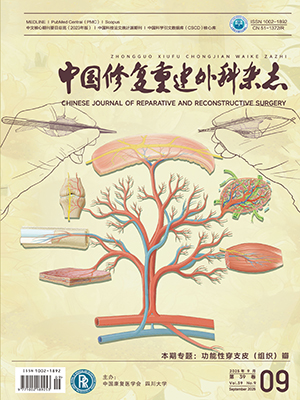To evaluate the value of clinical application of examination of fibrillation potential amplitude, 110 patients, 97 males and 13 females, were examined and only the maximum fibrillation potential amplitudes were recorded in 420 muscles. The results showed that there was no significant difference between sexes, ages and sides. However, significant difference was evident between the groups of different frequency (1+ to 4+). The fibrillation potential amplitude was maximum at 3 to 4 months after denervation and still remained at relatively high level for years in certain patients. No significant difference was showed between the time groups in incomplete nerve injuries. Surgery did not affect the course of fibrillation potential amplitude change. It was suggested that the muscle cells sustained their property for years after denervation in some patients, thus it might explain that satisfactory result could be obtained from operative repair in some late cases. The changes of fibrillation potential amplitude might indicate that the changes from muscle denervation was still reversible and might be more accurate than traditional method of examination.
Citation: Song Haodong,Shen Liying,Gu Yudong et al.. CLINICAL SIGNIFICANCE OF CHANGES OF FIBRILLATION POTENTIAL AUPLITUDE FOLLOWING DENERVATION OF HUMAN SKELETAL MUSCLE. Chinese Journal of Reparative and Reconstructive Surgery, 1997, 11(1): 27-29. doi: Copy
Copyright © the editorial department of Chinese Journal of Reparative and Reconstructive Surgery of West China Medical Publisher. All rights reserved




